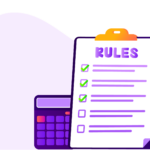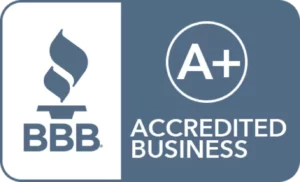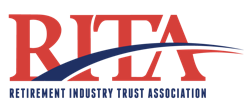Did you know that you can use a Roth IRA to purchase real estate? Many banks lead you to believe that you can only use your Roth IRA to invest in stocks, bonds, and mutual funds. However, you can use your Roth IRA to invest in alternative investments such as real estate. With IRA Financial’s Roth IRA, you can invest in both traditional and alternative investments, including real estate. You simply need to open a Self-Directed Roth IRA with a custodian that allows you to invest in real estate, and you will be able to begin diversifying your retirement portfolio.
What is a Self-Directed Roth IRA for Real Estate?
A Self-Directed Roth IRA to Purchase Real Estate is a wise choice. As you may know, there are many benefits to establishing this type of retirement plan. Again, with the Self-Directed IRA, you can invest outside of traditional investments. This allows you to diversify your portfolio and better protect your assets/funds. As you may know, in the 2008 financial crisis, many retirement holders lost almost 25% of their retirement assets. As a result, diversification is steadily growing in popularity. Plan participants realize they don’t have to invest in Wall Street.
To point out, alternative investments, such as real estate, have always been possible IRA investments. Yet prior to 2008, very few people knew about self-directed retirement plans and alternative assets. The small group wasn’t that was knowledgeable of this and didn’t get hit as badly by the financial crisis.
Learn More: How to Invest in Real Estate with Retirement Funds
Real Estate Investments in a Roth IRA
Below, we provide a partial list of domestic or foreign real estate investments you can make with your Self-Directed Roth IRA.
- Residential homes
- Raw Land
- Commercial property
- Apartments
- Duplexes
- Condos/townhomes
- Mobile homes
- Real estate notes
- Real estate purchase options
- Tax liens certificates
- Tax deeds
Learn More: Self-Directed IRA to Flip Homes Tax Free
*Did you know that a Self-Directed Roth IRA allows you to invest in alternative investments? While this article focuses on real estate, you can make a wide range of alternative investments with a Self-Directed Roth IRA. Furthermore, some Self-Directed IRA Custodians limit what you can invest in. At IRA Financial, you are allowed to invest in what you know, all for a low annual fee.
Considering Opening a Roth IRA for Real Estate?
Get your Free Consultation with Our Experts!
Benefits of Using a Roth IRA to Purchase Real Estate
Real estate has emerged as a highly popular non-traditional asset for investment. But why is that? Here are some compelling reasons:
- Familiarity and Confidence: People tend to invest in what they understand. Real estate, being tangible and familiar, inspires confidence. Many individuals possess substantial knowledge about the property market, making it an attractive investment choice.
- Inflation Protection: Investing in real, physical assets can shield retirement savings from the erosive effects of inflation. Unlike other forms of investment, real estate tends to appreciate over time, providing a hedge against rising prices.
- Tax-Free Income and Gains: Did you know that all income and gains from real estate can be tax-free? It’s true! When real estate is owned within a Self-Directed IRA LLC, it enjoys tax-exempt status. Let’s illustrate this with an example:
- Suppose you purchase a property using your self-directed IRA for $100,000.
- Later, you sell the property for $300,000, resulting in a gain of $200,000.
- In this scenario, the gain appreciation is generally tax-free.
- Contrast this with using personal funds (non-retirement funds), where the gain would be subject to federal and state income taxes.
*Real estate remains the most common asset held by IRA Financial clients. However, IRA Financial does not limit what you can invest in. Some Self-Directed IRA Custodians only allow clients to invest in certain assets. Many do not allow real estate investments. At IRA Financial, you can invest in real estate and extensive alternative investments for a low annual fee.
Using a Self-Directed Roth IRA for Real Estate a Success Story
Joe’s Success Story: Consider Joe Average, who establishes a Self-Directed IRA LLC with an initial investment of $100,000 for real estate. Over 20 years, he achieved an average annual pretax return of 8%. By utilizing a tax-deferred IRA LLC strategy, Joe’s investment grows to an impressive $466,098. After accounting for taxes, he still retains $349,572. However, if Joe had invested with taxable funds (non-retirement funds), his final amount after 20 years would be $320,714.
Learn More: Beginners Guide to Alternative Assets
Why Buy Real Estate with a Roth IRA?
Self-Directed Roth IRA with Checkbook Control
Most financial institutions don’t allow real estate investments. In the end, the IRA custodian makes the decision in what you can invest in with your retirement plan. However, a checkbook controlled self-directed IRA LLC, you are the manager of the LLC, and can make decisions on what to invest in. Of course, this includes real estate.
For reiteration (you can find this information in our other Self-Directed IRA LLC pages), now making investments is quick and easy. You no longer pay high custodian fees or must wait as custodians approve (or deny) your investments. With checkbook control Self-Directed IRA LLC, you write a check or wire funds from your IRA LLC bank account, and the investment is yours.
Learn More: What is a Self-Directed IRA LLC with Checkbook Control?
How to use a Roth IRA to Invest in Real Estate
Open a Self-Directed Roth IRA
Find a Self-Directed IRA Custodian and setup a Self-Directed Roth IRA. It is important to note that not all Self-Directed IRA custodians allow you to invest in real estate using a Roth IRA. IRA Financial is one of the few IRA Custodians that provide this option. To open an account, simply use our app to fill out the forms. An account number will then be generated. Once an account number is generated, you will need to fund your account using a rollover, transfer or contribution. If you have a traditional IRA or 401(k) you may also need to do a Roth conversion to open a Self-Directed Roth IRA.
Find an Investment Property
Once your account is open, you will need to find an investment property.
Purchase the Investment Property
Purchasing an investment property with your new Self-Directed Roth IRA is as simple as writing a check. With IRA Financial’s Self-Directed Roth IRA real estate solution, you simply use your IRA account to write a check. There is no need for approval or oversight from IRA Financial. Instead, you are free to invest in what you know.
Ensure Your New Investment Property’s Title is Under the Name of Your Self-Directed Roth IRA.
The title to the investment property and all transaction documents must be in the name of the Self-Directed IRA LLC. The LLC manager must sign the documents pertaining to the property investment
Ensure all Expenses Flow Through your Self-Directed Roth IRA
All expenses paid from the investment property go through the Self-Directed Roth IRA. Likewise, all rental income checks go directly into the Self-Directed IRA Roth IRA account. No IRA investment checks will deposit into your personal accounts.
Enjoy Tax Free Gains
Once you have successfully purchased your real estate investment with a Self-Directed Roth IRA, all you have to do is sit and watch the money flow through your account. Since you are using a Self-Directed Roth IRA, all income derived from the investment property will flow back to your Self-Directed Roth IRA tax free! Furthermore, you can use your new Self-Directed Roth IRA to invest in a wide-range of alternative and traditional assets, including cryptos, stocks and bonds, precious metals, private businesses, hard-money loans and more.
Do I have to use a Self-Directed Roth IRA to Invest in Real Estate?
No, to invest in real estate you will need a Self-Directed IRA. However, whether you decide to you a Self-Directed Roth IRA is completely up to you. If you have a traditional IRA, you will still need to make it a Self-Directed IRA, but the process primarily remains the same. You will not need to perform a Roth conversion if you plan to use a traditional pre-tax IRA to invest in real estate. One limitation of using a traditional Self-Directed IRA to invest in real estate is that taxes will be due when you take a required minimum distribution. For more information, see: Using a Self-Directed IRA to Buy Real Estate. If you are new to real estate investing, we also recommend you read the Beginners Guide to Investing in Real Estate with Retirement Funds.
I am Self-Employed, can I use my Solo 401(k) to Invest in Real Estate?
If you are Self-Employed, using a Solo 401(k) to invest in real estate will allow you higher contribution limits. IRA Financial also has a Self-Directed Solo 401(k) that works just like a Self-Directed Roth IRA for real estate. For more information on how to buy real estate with a Solo 401(k) see: Using a Solo 401(k) for Real Estate Investing.
What are the Prohibited Transaction Rules for a Self-Directed Roth IRA to Purchase Real Estate?
Before using your new Self-Directed Roth IRA to invest in real estate, we recommend you understand the prohibited transaction rules.
The basis of the prohibited transaction rules stem from the premise that investments involving Roth IRA and related parties are handled in a way that benefits the retirement account and not the IRA owner. The rules prohibit transactions between the Roth IRA and certain individuals known as “disqualified persons”. These rules can be found in Internal Revenue Code Section 4975. In general, the definition of a “disqualified person” (Internal Revenue Code Section 4975(e)(2)) extends into a variety of related party scenarios, but generally includes the Roth IRA holder, any ancestors or lineal descendants of the Roth IRA holder, and entities in which the Roth IRA holder holds a controlling equity or management interest.
The IRS permits using a Self-Directed Roth IRA LLC to purchase real estate or raw land. Since you are the manager of the Self-Directed Roth IRA LLC, making a real estate investment is as simple as writing a check from your Self-Directed Roth IRA bank account. The advantage of purchasing real estate with your Self-Directed Roth IRA LLC is that all income and gains are tax-free, assuming the Roth IRA has been opened for 5 years and the Roth IRA holder is over the age of 591/2 when the distribution is taken.
For example, if you purchased a piece of property with your Self-Directed Roth IRA LLC for $100,000 and you later sold the property for $300,000, the $200,000 of gain appreciation would generally be tax-free. Whereas, if you purchased the property using personal funds (non-retirement funds), the gain would be subject to federal income tax and in most cases state income tax.
When it comes to using a self-directed Roth IRA to purchase real estate, there are a number of rules that should be followed in order to make sure the real estate Roth IRA investment does not violate any of the IRS prohibited transaction rules. Among these rules include:
The deposit and purchase price for the real estate property should be paid using Self-Directed Roth IRA LLC funds or funds from a non-disqualified third-party
No personal funds or funds from a “disqualified person” should be used
All expenses, repairs, taxes incurred in connection with the Self-Directed Roth IRA real estate investment should be paid using retirement funds – no personal funds should be used.
If additional funds are required for improvements or other matters involving the real estate investments, all funds should come from the Self-Directed Roth IRA or from a non “disqualified person.”
If financing is needed for a real estate transaction, only non-recourse financing should be used. A non-recourse loan is a loan that is not personally guaranteed and whereby the lender’s only recourse is against the property and not against the borrower.
The Roth IRA holder or “disqualified person” in connection with the real estate investment should perform no services in connection with the use of self-directed IRA LLC. In general, other than standard management type of services (necessary and required tasks in connection with the maintenance of the LLC), no active services should be performed by the LLC manager or a “disqualified person” with respect to the real estate transaction.
Title of the real estate purchased should be in the name of the Self-Directed Roth IRA LLC. For example, if Joe Smith established a Self-Directed Roth IRA LLC and named the LLC XYZ, LLC, title to real estate purchased by Joe’s Self-Directed Roth IRA LLC would be as follows: XYZ LLC
Although the use of a non-recourse loan is permitted with a self-directed Roth IRA when buying real estate, the use of a non-recourse loan would impose a tax pursuant to IRC 514 on a percentage of the income generated by the Roth IRA investment based off a percentage of the debt used in proportion to the amount of cash invested. This tax is especially difficult in the case of a Roth IRA, which generally offers tax-free income and gains.
Keep good records of income and expenses generated by the real estate investment.
All income, gains or losses from the Self-Directed Roth IRA LLC real estate investment should be allocated to the IRA and be returned to the Roth IRA LLC bank account.
Make sure you perform adequate diligence on the property you will be purchasing especially if it is in a state you do not live in.
Make sure you will not be engaging in any self-dealing real estate transaction which would involve buying or selling real estate that will personally benefit you or a “disqualified person.”
If you need to make additional Roth IRA contributions to your Self-Directed IRA, the contribution should be made to the Roth IRA custodian/administrator and then the funds will be transferred to the Roth IRA LLC.
Use Your Roth IRA to Invest in Real Estate Today!
Did you know?
A Self-Directed IRA allows real estate transactions, including investments in rental properties and office buildings, as well as allowing other real estate ventures. The SDIRA should be formed in the state where the real estate will be located. An SDIRA also allows for more traditional investments. Alternatively, if you are self-employed, you can use your Solo 401(k) to invest in alternative assets. Contact IRA Financial to get started.
Read More:
How Do Self-Directed IRAs Work?
What is the Minimum Amount to Invest in Real Estate?
Real Estate: The Best Hedge Against Inflation?
Let’s get started! Contact IRA Financial today.







